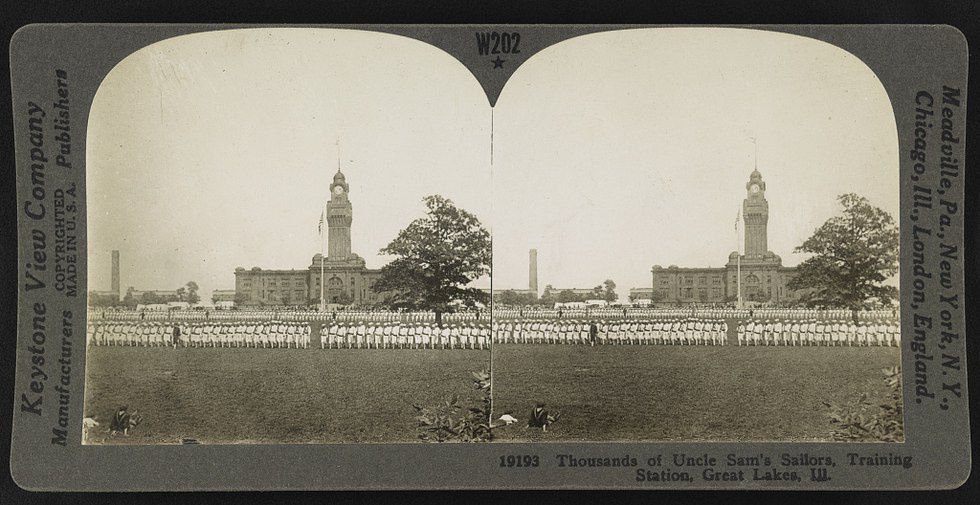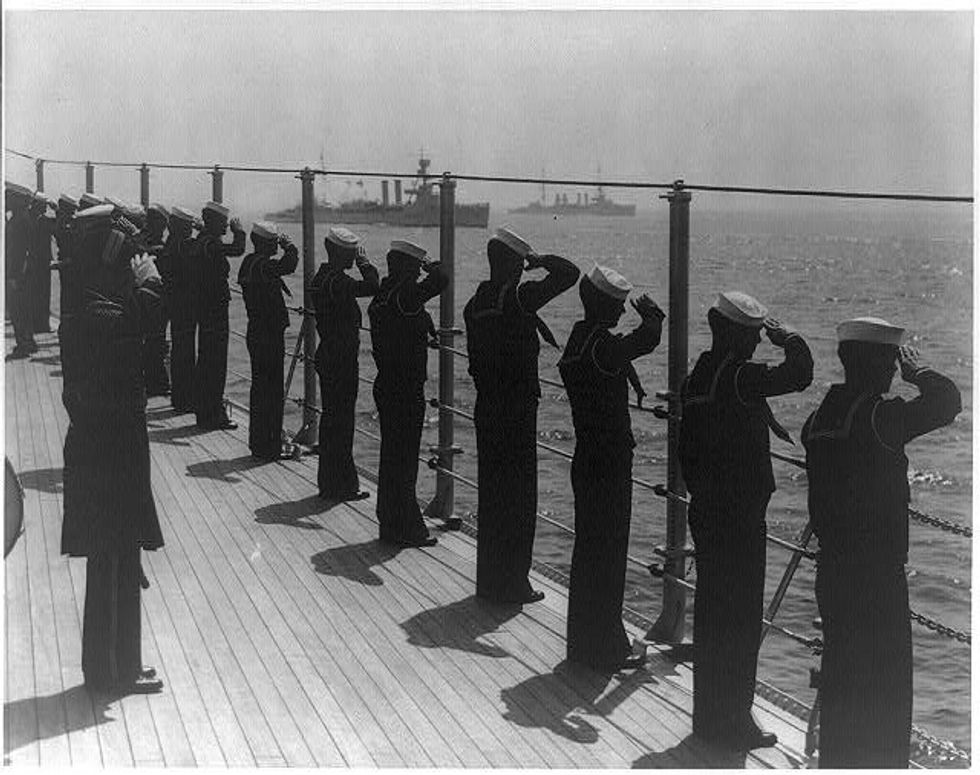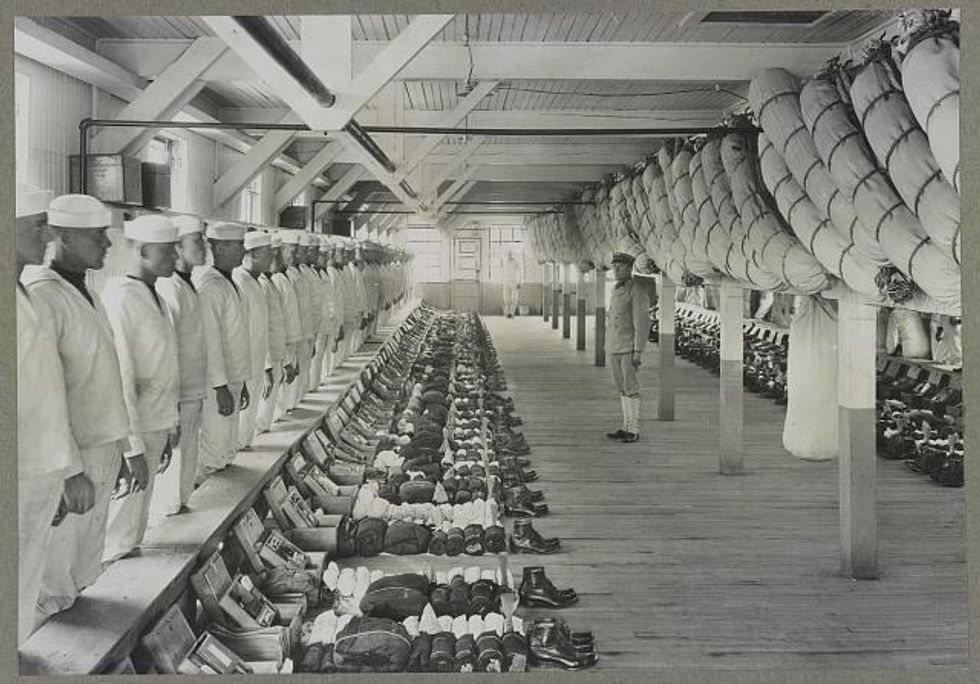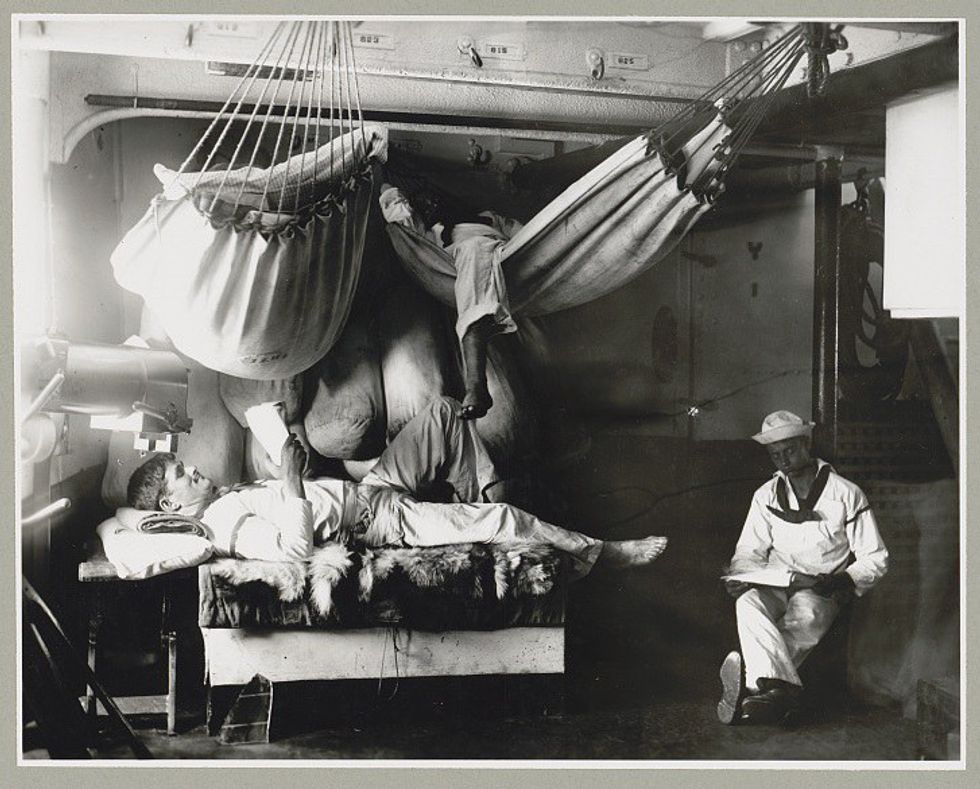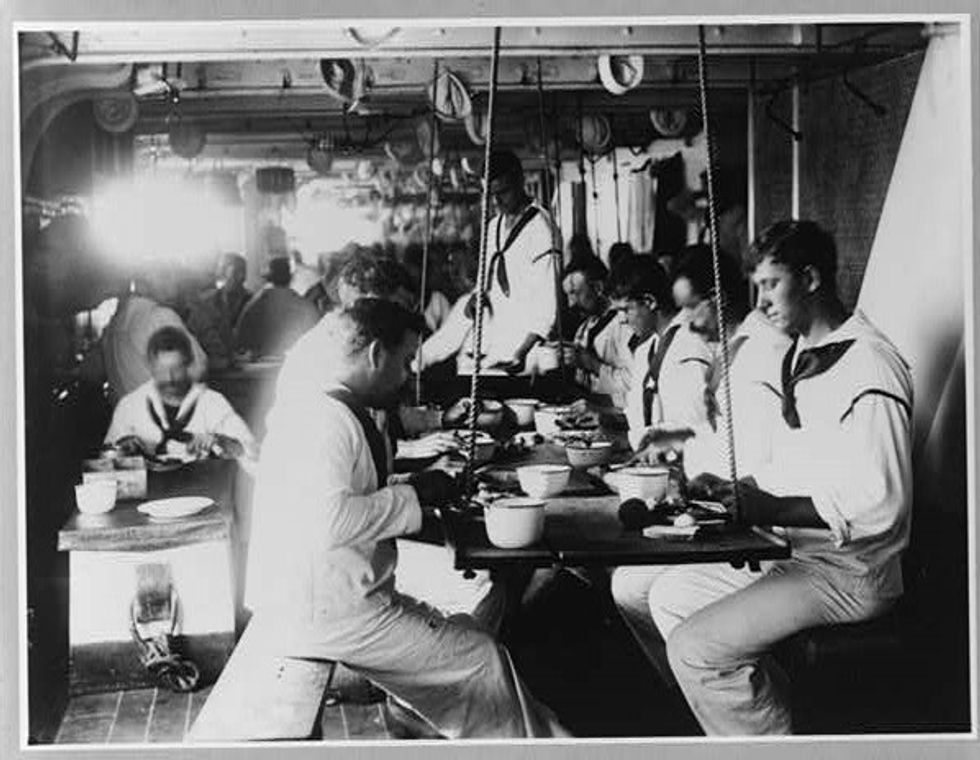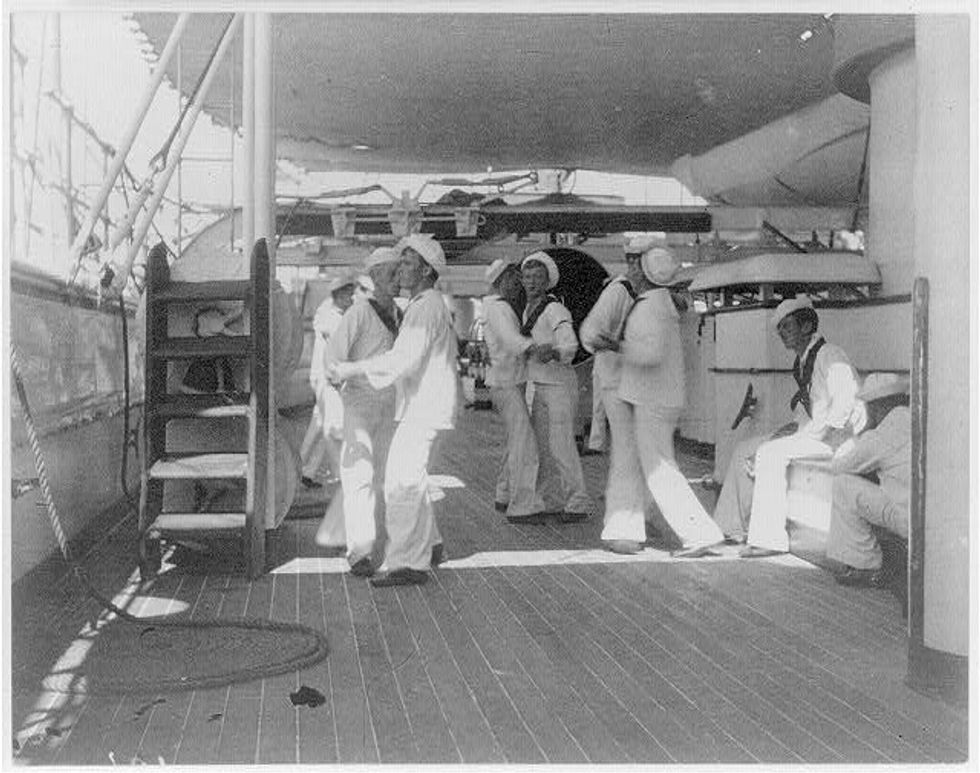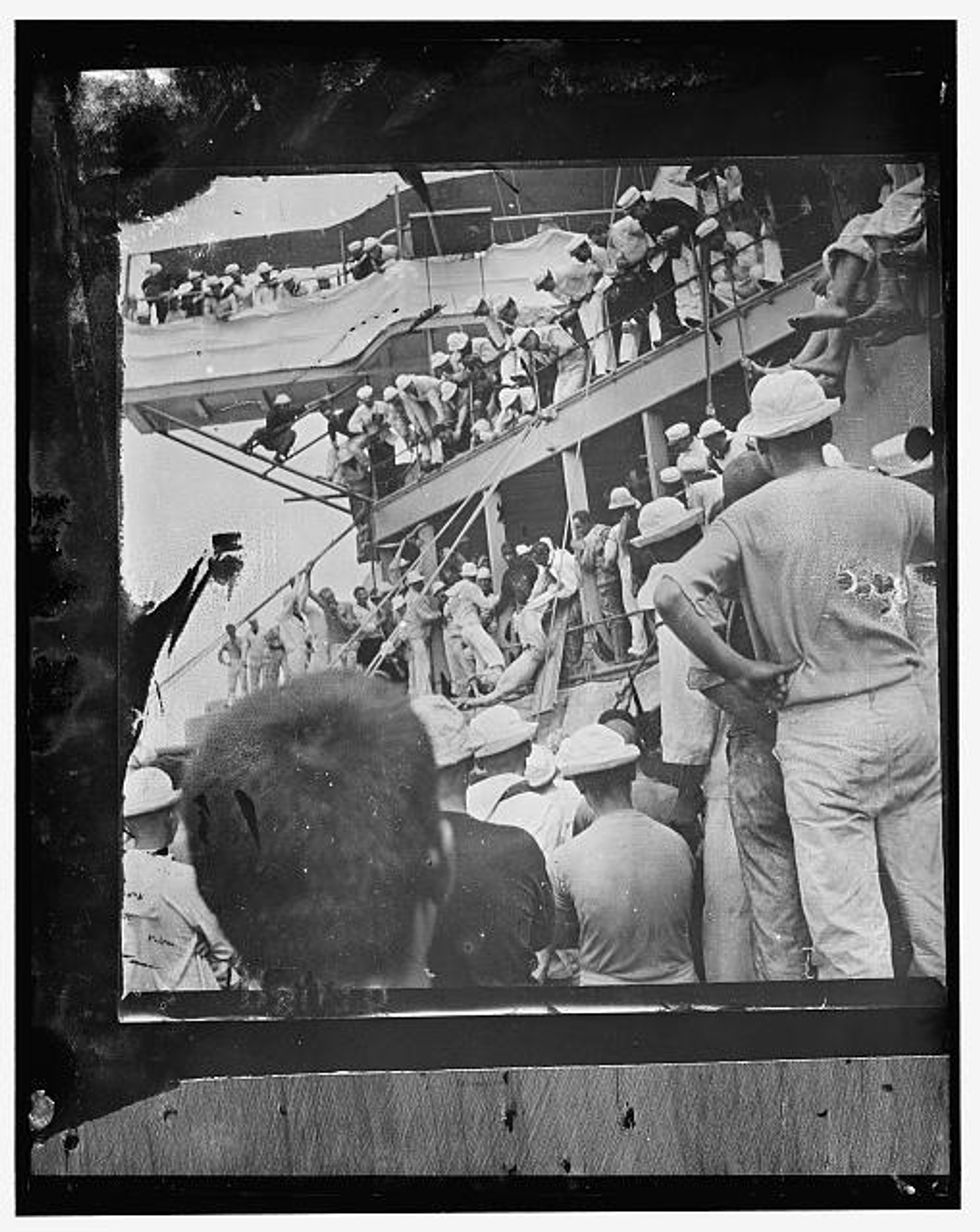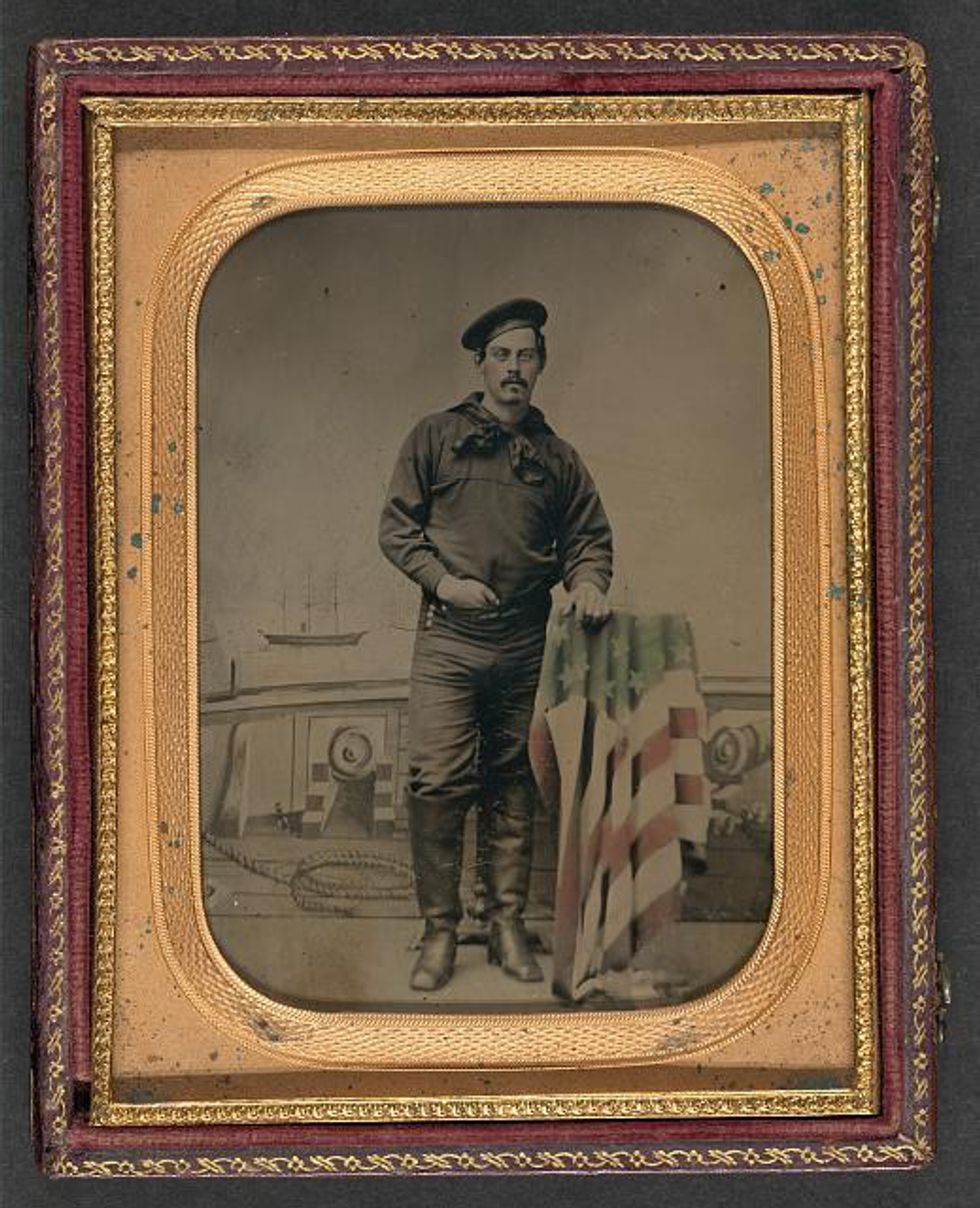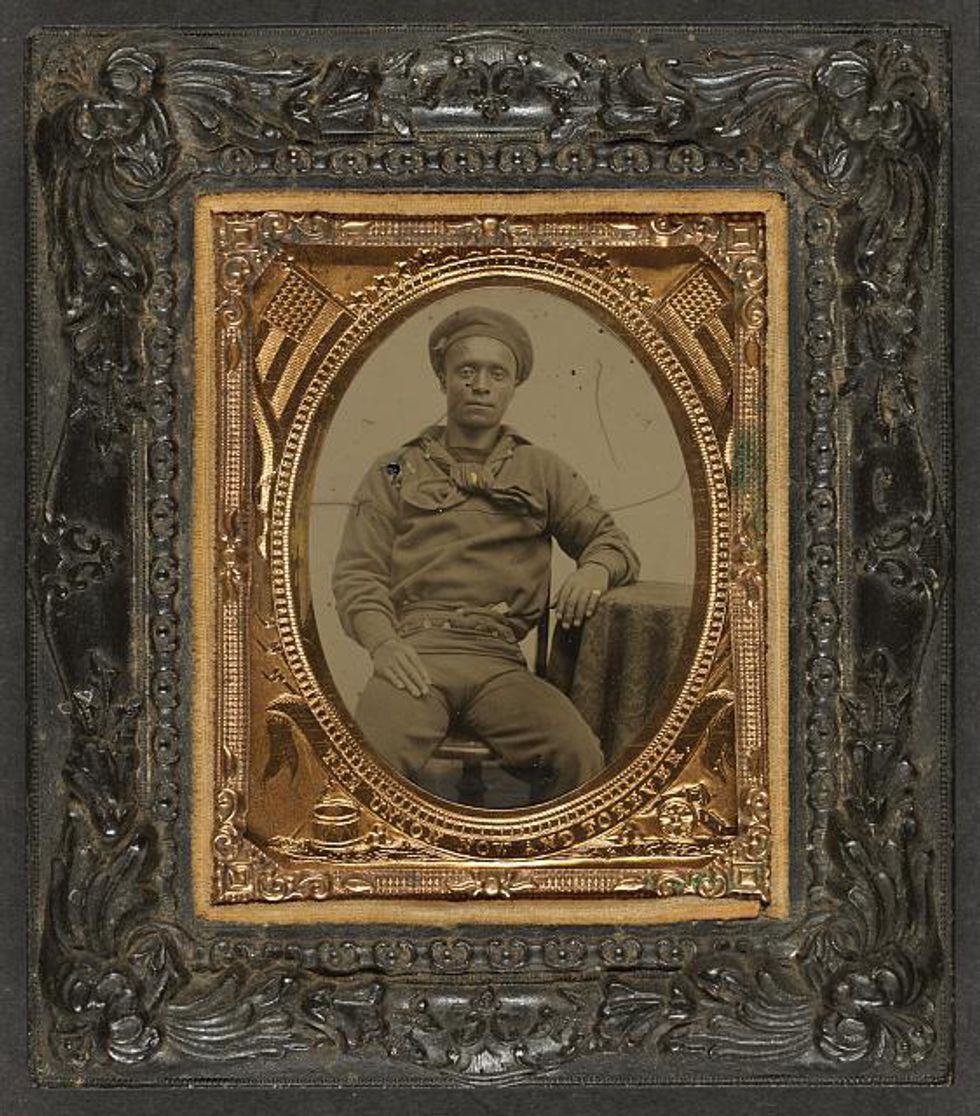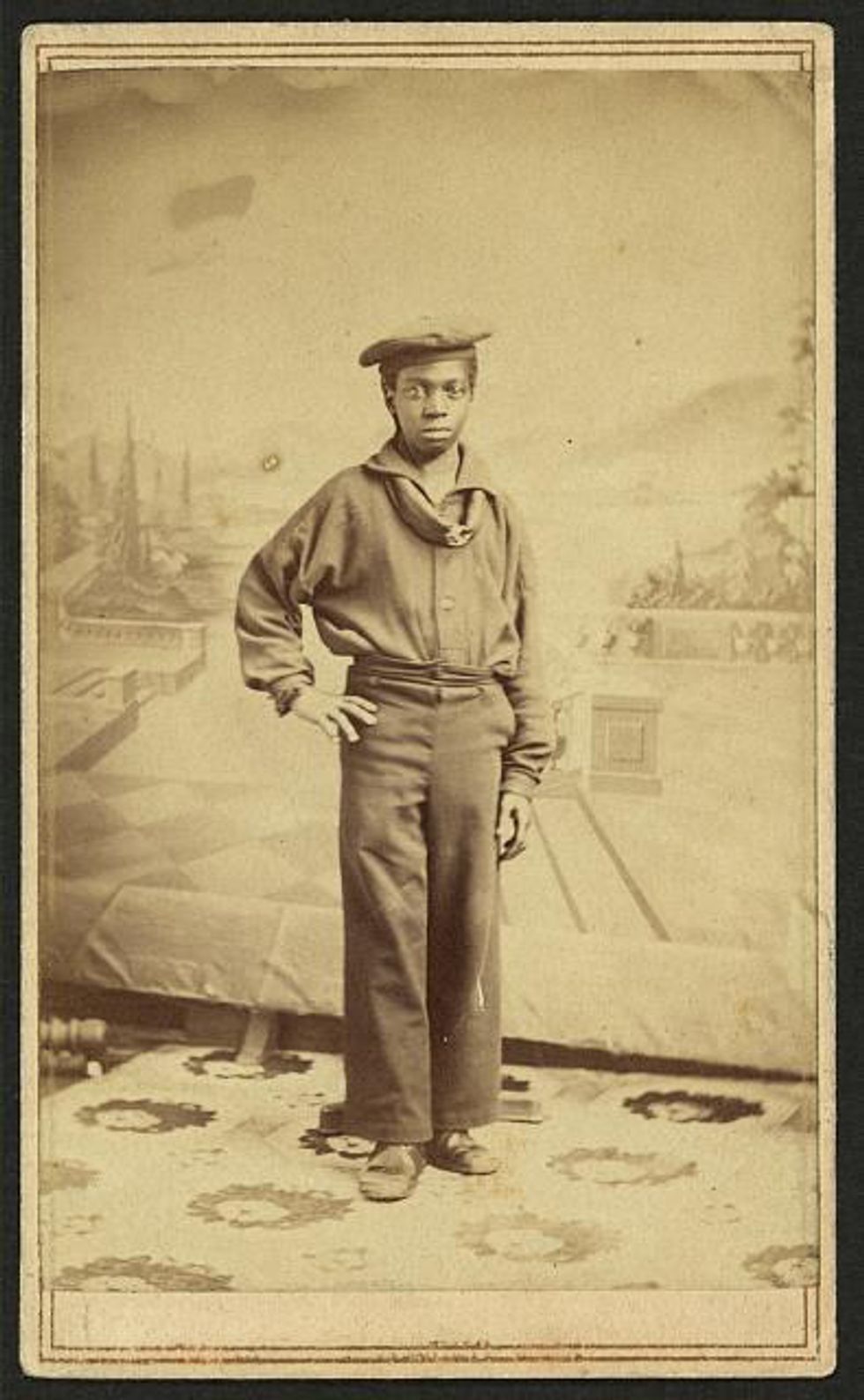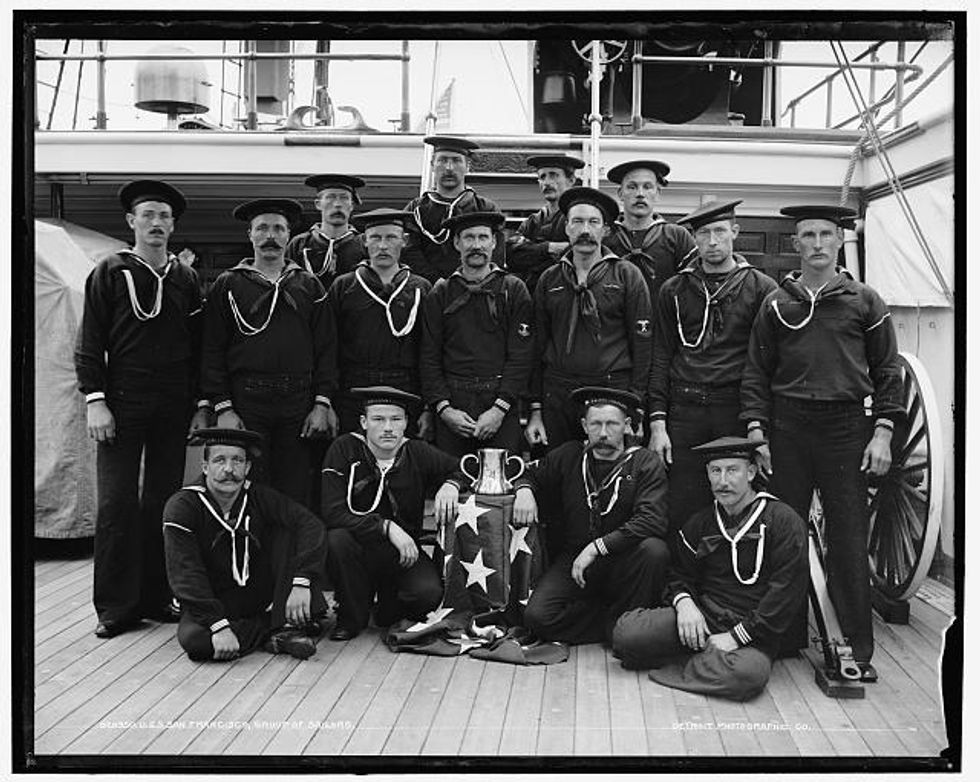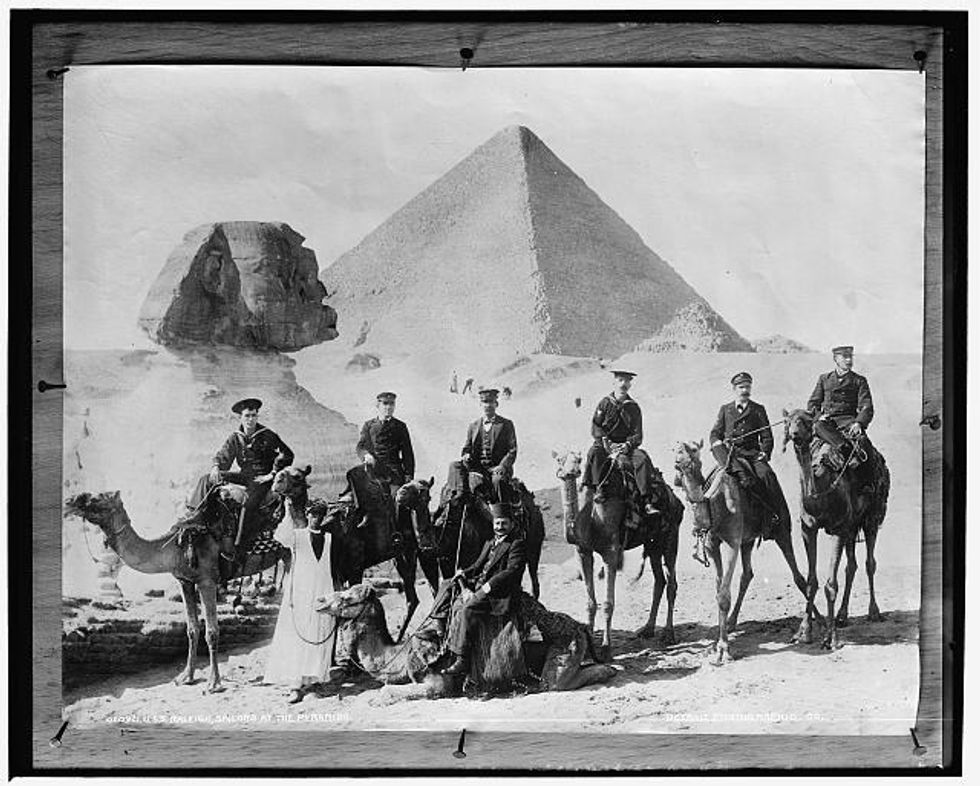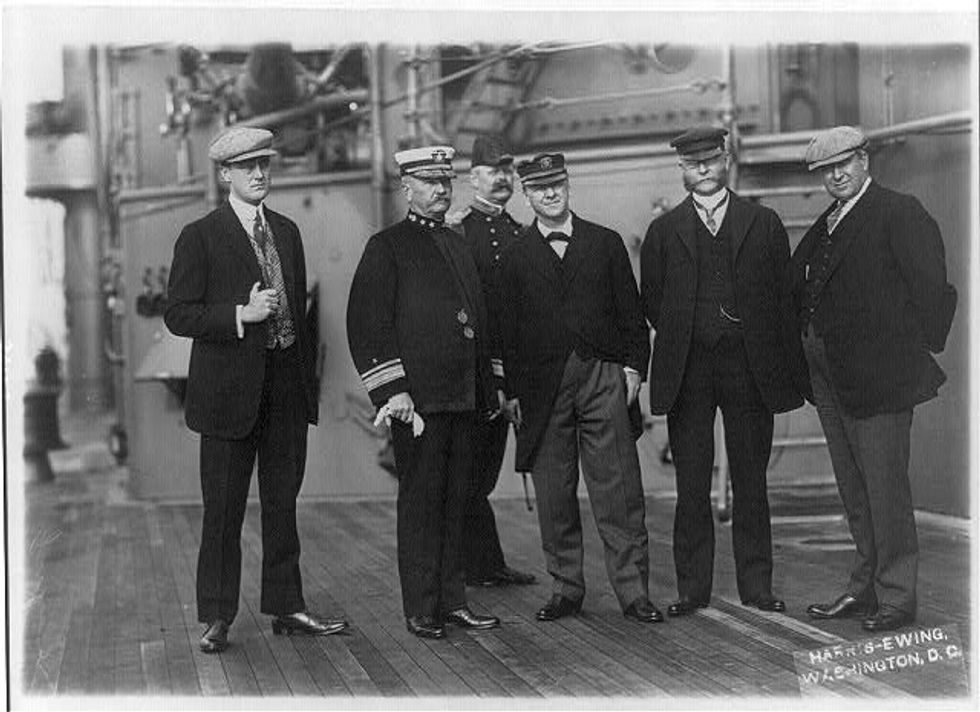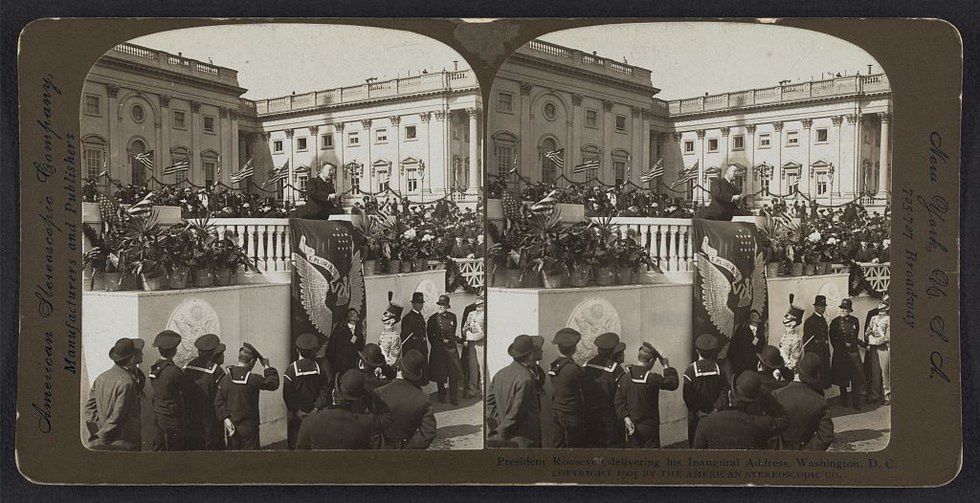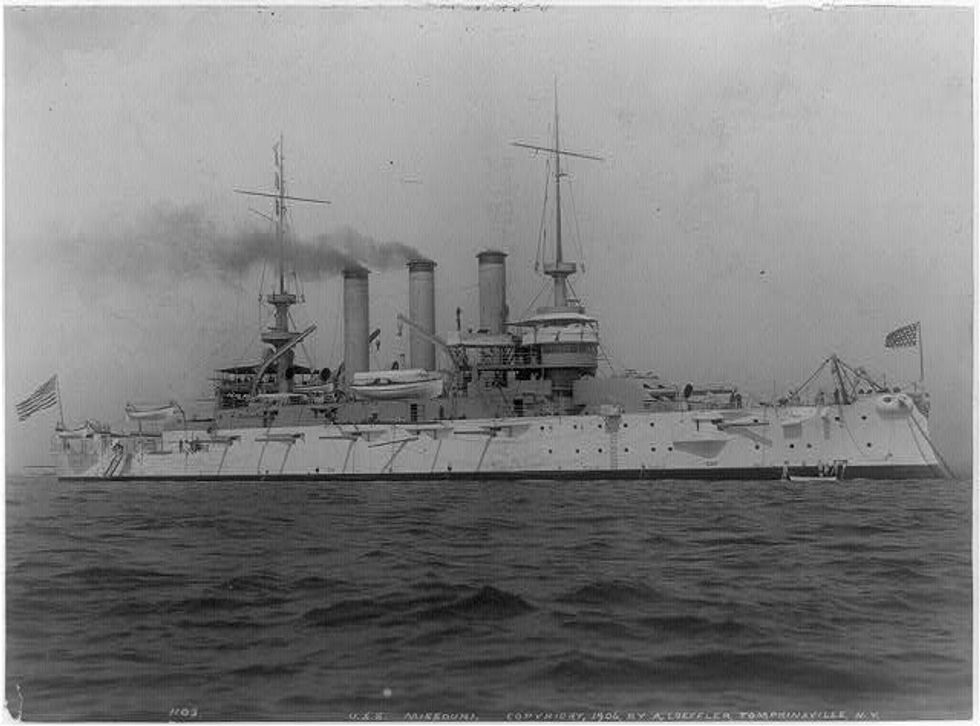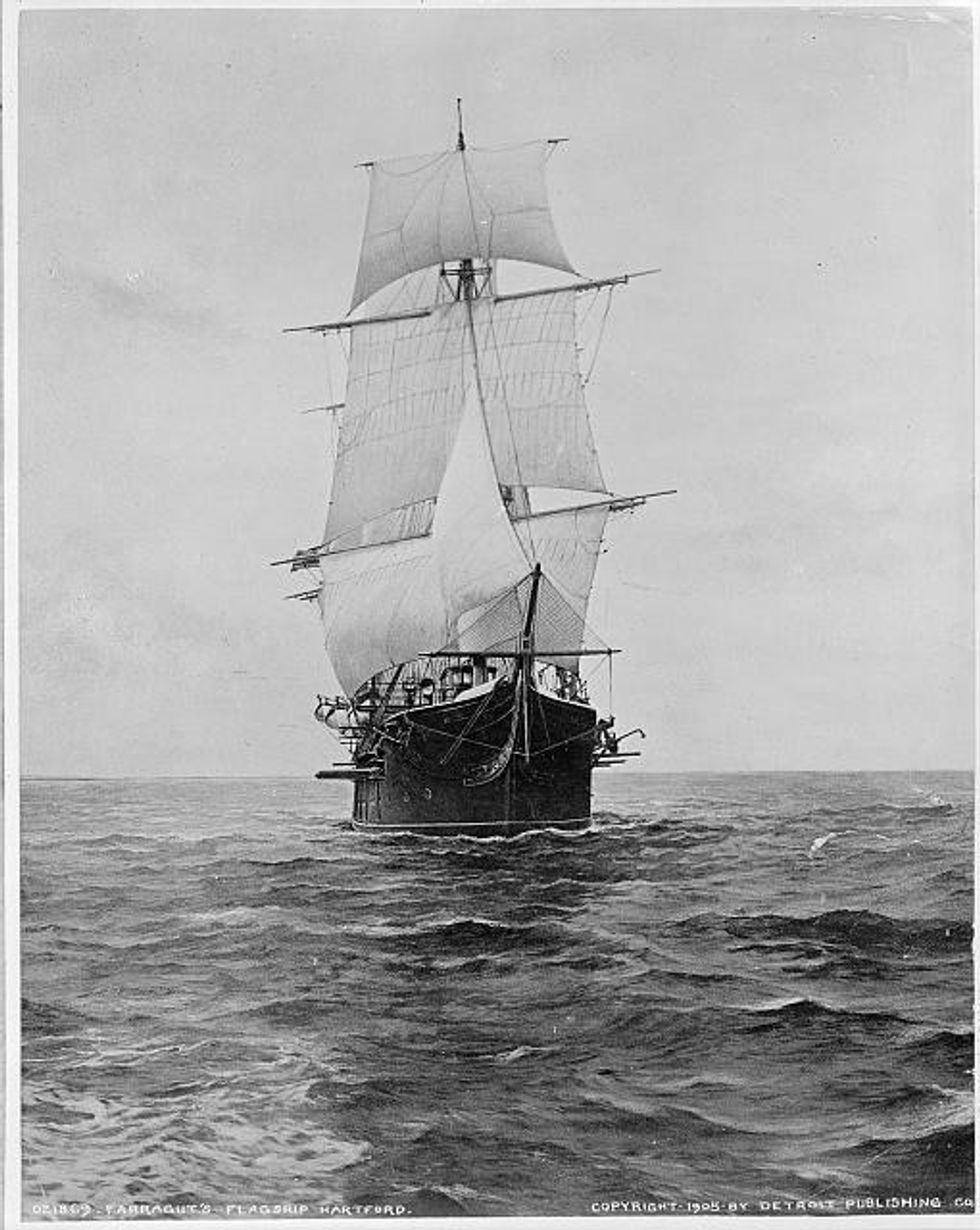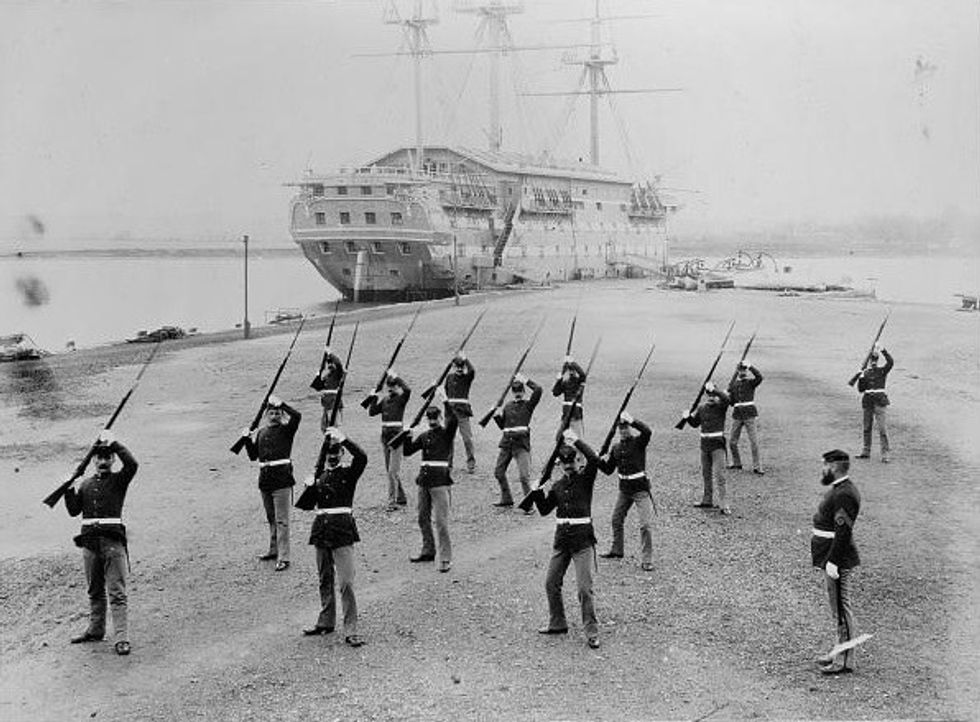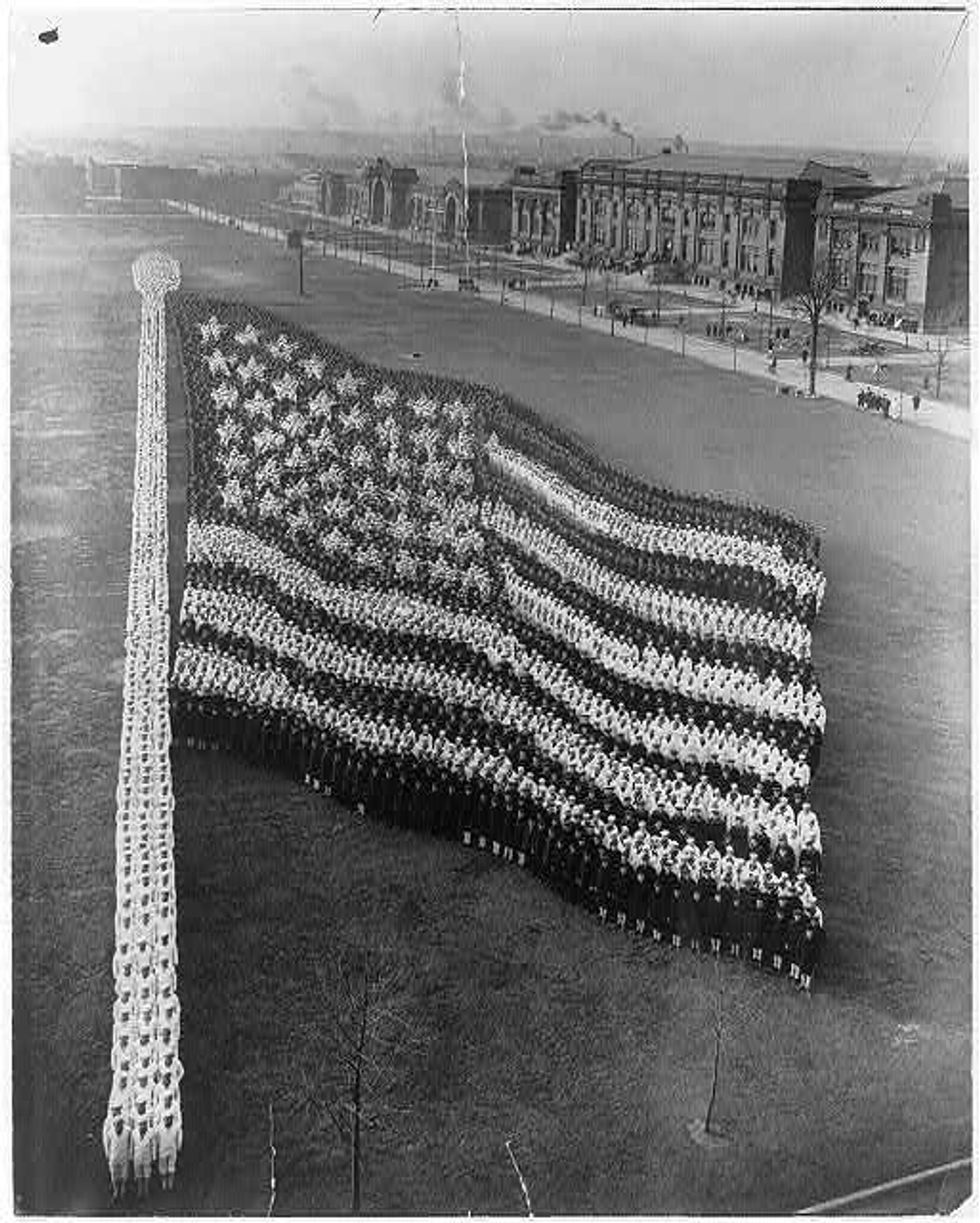The following 18 photographs are of some 500 from the Library of Congress's collection of American sailors. The images listed were taken during the Civil War and extend to the First World War, and cover subject matter containing portraiture to shipboard life.
Additional imagery can be found on the Library of Congress's site under Photos, Prints, Drawings of American sailors.
Thousand's of Uncle Sam's Sailors, Training Station, Great Lakes, Ill., ca. 1914-1918
Active for over a hundred years, Great Lakes has been the Navy's premier basic training facility since being consolidated from Naval Training Center San Diego, California and Naval Training Center Orlando, Florida, in 1993.
In the background Great Lakes Building 1, built in 1906, can be seen.
Line of Sailors Manning the Rail, ca. 1913-1921
"Saluting is a centuries-old military tradition that is impressive when done correctly, embarrassing when done poorly." - The Bluejacket's Manual
Initially referred to as "man the yard," today manning the rail is where the crew is stationed at regular intervals along the rails and substructure of the ship. This is to honor those who are left behind to await for the ship's return; and customary when leaving home port and while entering home port.
Sea Bag Inspection inside Barracks, U.S. Naval Training Station, Camp Wissahickon, Cape May, New Jersey, 1918
At the sailors feet is the entirety of their sea bag, the only items required for them to bring on the boat. If not folded correctly; their were repercussions. If you were missing an item; you were most likely going to see the big man and put on extra duty.
Frances Benjamin Johnston, USS Olympia, View of the Crew's Quarters, 1899
Photograph shows three sailors relaxing in their quarters, one man is in a hammock.
Frances Benjamin Johnston, USS Olympia Crew's Mess, 1899
Interior view of dining area aboard the USS Olympia, showing sailors eating at a table suspended by ropes and their sailor caps hanging from the ceiling.
Frances Benjamin Johnston, Sailors Dancing with each other Aboard USS Olympia, 1899
Sailors take time from the days rigorous work to relax and waltz.
Crossing the Line, ca. 1900
Crossing the Line is an initiation rite celebrated by numerous nations navy's to commemorate a sailor's first time crossing the Equator (notice the man in the center of the image upside down and hanging by his feet!). Although typically a brutal ceremony in the 19th and 20th centuries, the Shellback ceremony has become more of a symbolic act today.
Historical footage from the FDR Presidential Library of FDR Crossing the Line in 1936.
Footage from 1983 of the USS Coral Sea with "Run Like Hell" by Pink Floyd as background music.
Unidentified Sailor in Union Uniform, ca. 1861-1865
Union Sailor resting hand on American flag-draped over table in front of painted backdrop showing naval scene.
Unidentified Sailor in Union Uniform, ca. 1861-1865
Beautiful portrait; The intricacies in the metal casing and the wood frame are wonderful, and the poise posture of the individual in the portrait is poetic.
African Americans were first limited to 5% of the naval enlisted force due to regulations created in the 1840s. This figure grew to nearly 25% by the third quarter of 1864.
More information on African American Sailors during the Civil War can be found here.
Unidentified Sailor, 1861-1865
A young American sailor standing in a contrapposto pose in front of a backdrop of an elaborate exterior scene.
USS San Francisco Sailors, ca. 1890-1901
Although magnificent, these mustaches are not representative of today's naval standards.
According to the Navy's Uniform Regulations, under article 2201, in Personal Appearance, "Mustaches are authorized but shall be kept neatly and closely trimmed. No portion of the mustache shall extend below the lip line of the upper lip. It shall not go beyond a horizontal line extending across the corners of the mouth and no more than 1/4 inch beyond a vertical line drawn from the corner of the mouth. The length of an individual mustache hair fully extended shall not exceed approximately 1/2 inch."
USS Raleigh Sailors at the Pyramids, 1897
Sailors from the USS Raleigh are photographed in front of the Sphinx and Pyramids, while operating off the Levant, prior to the Spanish-American War.
Informal Group on Deck of Warship, ca. 1915
Depicted in the photograph, during an inspection of an American warship, is a young Franklin Delano Roosevelt, then Assistant Secretary of the Navy under Josephus Daniel; standing in center with bow tie.
President Theodore Roosevelt Delivering his Inaugural Address, Washington, D.C., 1905
Second in line to the Presidency, Vice-President Theodore Roosevelt became President after President William McKinley was assassinated. Roosevelt became the first incumbent President to win election to a term in his own right after having ascended to the Presidency, from the Vice-Presidency, upon the death of his predecessor.
A group of Navy boys can be seen in foreground in their dress blues.
A focused detail of this photograph can be found here.
USS Missouri, ca.1906
Missouri was stationed on the Atlantic for the entirety of her career, and was one of President Theodore Roosevelt's 16 battleships to circumnavigate the globe with the so-called Great White Fleet, from December 16, 1907, to February 22, 1909.
Farragut's Flagship Hartford, ca. 1906
USS Hartford was launched November 22, 1858, at the Boston Navy Yard, and became a highly used vessel for the Union during the Civil War. Hartford fought in the Battle of New Orleans,1862, and the Battle of Mobile Bay, 1864. Decommissioned and recommissioned several times after the Civil War for short tours of duty, the Hartford was dismantled due to deterioration. Dozens of the ships relics were dispersed across the United States in 1956.
USS New Hampshire, Bayonet Drill, ca. 1892-1904
Marines drill with bayonets on a wharf near the prison ship USS New Hampshire.
The USS New Hampshire was originally commissioned USS Alabama before changing her name during the Civil War. During the War between the States the ship was a storeship and depot ship. She was later a flag ship for the Apprentice Training Squadron and then became a prison ship before being renamed the USS Granite State. A fire on April 21, 1921, destroyed the ship while in dock.
Arthur Mole and John Thomas, Living Flag, 1917
Covering seven acres and consisting of about 10,000 American sailors, the photographers, Arthur Mole and John Thomas, titled this image a "Living Flag." The two went on to create about 30 of these patriotic images, visiting multiple U.S. military camps during World War I.
More information on this image, and a few more like it, can be found here.
In closing, a short video of the US Navy Band playing Anchors Away.
President Obama's first presidential inaugural parade, 2009
GO NAVY!!




